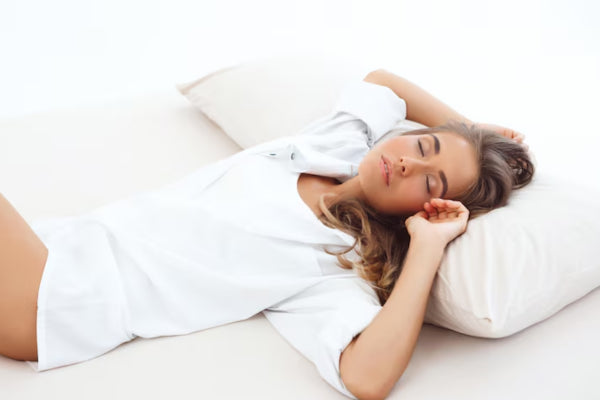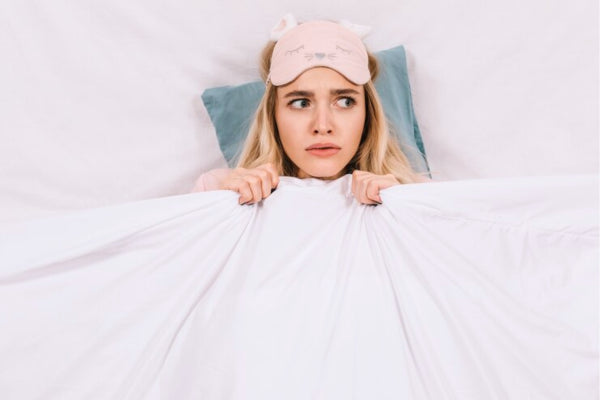We’ve all been there – the teenage years. A time fraught with confusion, change, growth and finding one’s identity in this modern world. We’ve also heard elders describe teenagers as “lazy”, “disinterested” and “unmotivated”. Perhaps it’s time we cut teens some slack, because after all, most of us have been there. The question is, why are teens generalised in such unfavourable ways – are they truly lazy? Or is this just simply an outsider’s observation based on teen behaviour
Sleep is the driver of so many things. Even when you’re awake, your body is readying itself for its nightly slumber, and whether you like it our not, the longer your awake, the greater the volume of sleep hormones are present in the body. Humans cannot live without sleep, even in utero infants have sleep and wake cycles. What goes wrong in the teen years? What changes? To better understand teens, we have to get to understand sleep.
Sleep through the Ages
Our sleep is affected by any number of factors from lifestyle, caffeine intake, stress, exercise, how much sleep we had the night before, medication, sleep environment temperature, light exposure and also our age. As we age our sleep needs change; and as our sleep needs change so do our habits. However, transitioning into new sleeping habits may not always be seamless and our modern lifestyles can greatly affect this. Infant sleep looks vastly different to elderly sleep, while sleeping patterns of male retirees can be in direct contrast to female retirees. Our sleep is governed by acute biological processes but it’s modern life which disrupts these fine-tuned processes. Sleep disruptions can occur for biological reasons, be it menopause, pregnancy or the menstrual cycle. While other disruptions come in the form of lifestyle-related diseases and disorders: sleep apnoea, GERD, hyperthyroidism to name a few. These are lifestyle-related disorders which are further exacerbated by things like chronic medicine, stress, alcohol-intake and caffeine consumption. Our sleep changes as we age, but this does not happen in isolation of our lifestyles. The sleep of the modern man is now a tussle between our biology and our biography, in which the latter leads the way.
Early life and Pre-teen Sleep
We all know that newborns need a lot of sleep and that their sleep is critical to their development. The strange thing is that newborns also need to eat, and so what transpires is a seemingly sporadic sleep pattern punctuated by feeding events. On average, a newborn will sleep for 16-20 hours a day, but there’s a caveat: babies cannot tell the difference between day and night, and it is their less sophisticated circadian rhythm which causes such disruption. Between 1 and 4 years of age, the amount of sleep needed declines to between 11 and 12 hours a day. And by the time humans reach 6 or 7 years of age, they will have transitioned from daytime napping to a more consolidated block of sleep at night time. By this stage, much of their sleeping patterns mimic those of adulthood.
Adolescence: The Gateway to Teen hood and many Changes
At the onset of teen hood (13 years old), up until 19 years old, the average volume of nightly sleep declines by 40-50 minutes (The Sleep Foundation). The Sleep Foundation also reports that as much as 73% of high schoolers get less than the recommended amount of sleep every night. If we break that down into simpler terms, almost an hour of sleep is lost. It may not seem like much, but less sleep over time has detrimental affects on humans. Why does this happen? Perhaps it’s part biology and part lifestyle? The answer is yes and no. All of us have what is termed our circadian alerting system. This system promotes wakefulness and inhibits sleep, and during key developmental stages this becomes disrupted especially so in teens. This internal clock or pacemaker literally prevents teens from feeling sleepy until later in the night. Needless to say this results in later bedtimes, and with our modern lifestyles translates into less sleep. Generally, school begins somewhere between 7.30 and 8.30am for most learners but this is at odds with a teen’s circadian cycle – and forces them to wake up earlier than their circadian cycle would like. What results again, is less sleep. This is biology at play, and while we are largely at its mercy, we can try to mitigate the negative affects by making some lifestyle adjustments. However, lifestyle adjustments are the hardest to make. Exposure to artificial light at school or in the home does not do teens much good. Artificial light is what tricks the internal waking and sleep clock into thinking its earlier than it is, which in turn signals the brain to stay awake and pump the brakes on the vital sleep hormones. Exposure to artificial light includes the dreaded blue light – emitted by cellphones, computers and televisions. Blue light has such a direct negative effect on our sleep and tricks the brain into being ‘awake’ for as much as 2 hours after exposure. In fact, it seems that artificial light exposure is not really such a new problem. When Paris introduced electric streetlamps in 1878, people began to spend more time socialising at night and tending to go to bed later. This was the start of a modern problem we are still trying to overcome today.
Biology vs Biography: How to better support sleep
We cannot escape our biology, but we can modify our lifestyles to support our sleep. Lifestyle modifications are the most difficult and often feel like a sacrifice of comfort, especially when trying to rationalise them to teenagers. Cellphones, computers and TVs pervade every avenue of life and we think we can’t live without them. While this is debatable, we can opt to try limit our exposure. And part of limiting exposure to these known sleep disruptors is to create a healthy sleep environment. Our sleep environment, generally a bedroom impacts on the quality of our sleep – from temperature, to noise, to light, to our mattress and pillow – all of these factors play a part in the symphony of sleep. Perhaps getting teens to sleep better requires going back to basics and making changes incrementally? Debating the merits of less blue light exposure is unlikely to resonate with teens and will likely be regarded as elders pontificating about what they think they know is best. The simplest start is the sleep surface – what kind of bed are you sleeping on. Among the factors to consider are: how soft/hard is the mattress? How old is the mattress? Is the mattress made of foam or fibres that help to keep sleepers cool and help with moisture control (pro tip: cotton-rich bedding helps). Our wisdom says that just because you’ve had a bed for 10 years doesn’t mean it will last you 10 years. Secondly, consider the pillow. Poor pillows get short shrift and are often overlooked as mere accessories, but a pillow is vital in supporting the sleeper. Some like mouldable feather-down pillows while others prefer bouncy and supportive foam. Perhaps it’s time to ask your teen which they prefer and even go so far as to do a test run with some options? Bedding is more than just a covering for the body. While pure cotton bedding is pricey, it is worth it because cotton fibre is excellent for temperature control and temperature control is vital for good sleep. Opt to invest in the highest cotton thread count that you possibly can. Aside from blue light, it may be hard to limit exposure to external light sources be it a streetlamp, hallway light or ambient light from outside. However, a simple yet comforting hack can be found in the form of an eye mask. Similar, if not the same to the type of eye masks they give you in airline amenity packs, this little eye shield helps to block out external light and send you off to sleep sooner.
We can Change for the Better
Convincing teens about the merits of sleep is likely just as difficult as limiting their blue light exposure. It’s a battle that is seldom won, however involving them in the sleep-decision making process may elicit more interest and agency in the process. Supporting teens means helping them to achieve the best sleep they can, and that starts with the sleep environment. According to a study by The Sleep Foundation, 93% of people reported that a comfortable mattress is important in getting good quality sleep. Keep it simple and go for a good mattress, a suitable pillow and a comfy eye mask. The transition into teen hood is already a challenging journey so our teens need the right kind of support that comes from a healthy sleep environment and a good mattress.
The Serta Perfect Sleeper
How many times have you heard someone say, “it’s what’s inside that counts”? Well, that phrase could not be more apt than when talking about beds. The very foundation of your bed is the mattress, and while 2 mattresses may appear like, it’s what’s beneath the surface that counts.
Your Mattress can be Hard or Soft but always Supportive
Serta have been perfecting sleep for decades, and with continuous research and development in the field, they have developed a mattress for almost everyone. The feel of a mattress is entirely subjective, akin to the bears’ beds in the fable of Goldilocks and The Three Bears. What’s hard for one, may be not hard enough for another. Durban Chiropractor, Dr Sarah button shares her wisdom when it comes to choosing a bed for the uninitiated, “Personal preference is obviously the key feature, I advise patients to look for a mattress that is firm, and initially a little 'too' firm as your body will adjust over the first few months. I also advise a sprung and flip-free mattress with a comfort or pillow top.”
The same applies when it comes to the cost of a mattress – some might feel a mattress warrants a hefty financial investment while others might deem that a wasteful expense. Aside from differing opinions on the subject, there is one thing that remains steadfast and that is Serta®’s commitment to delivering top-quality beds across the globe. This is one of the reasons that we at Dream Republic® have partnered with Serta® to stock their full range and offer value and comfort at every price point.
You can’t buy a bed with your eyes, it’s what below the surface that truly matters, so what’s beneath the surface? The Serta Perfect Sleeper range offers you ultimate choice with uncompromising comfort. The Perfect Sleeper range is made up of 3 variants: Rochester Euro Top Flip-free, Balmoral Pillow Top flip-free and Bedford Flip-free. Although all 3 variants in the range differ in name, they all deliver the comfort and quality that is synonymous with Serta®. Each mattress is flip-free and is manufactured with the unique steel coil innerspring support system, foam encasement technology and also a foam rail which reduces edge roll-off and increases bed surface area.
Pick your Preference to choose your Comfort
Comfort and support are the cornerstone of Serta® beds, and The Perfect Sleeper Range is suitable for the whole family. All that differs is the individual’s support preferences, and Dream Republic® applies a 1-10 comfort rating with 1 being firm and 10 being plush. The Perfect Sleeper range allows you to customise your comfort according to your preference. Starting with the Rochester Euro, this mattress is 7 on the rating scale with a medium to plush feel, while the Balmoral rating is 8 (plush) and the Bedford is medium to firm with a rating of 4. While the firmness of your mattress is entirely up to you, all mattresses in the Perfect Sleeper range are encased in the ground-breaking BioCare® ticking. Innovated by Boyteks Engineering and introduced into the Serta® range, this unique technology is literally designed to make you sleep better.
Designed to virtually eliminate all EMF Exposure
Electro Magnetic Frequencies are known sleep disruptors and are emitted by devices like cellphones, televisions and WIFI routers. While we cannot live without these devices, we can choose to mitigate the negative effects that they have on our sleep, and ultimately our health. Due to biological and developmental changes, teens potentially face a challenging time when it comes to their sleep. Combine that with the stress of academic and excessive blue light exposure, and you have the perfect recipe for poor sleep. Most kids have also spent the last 18 months or so schooling at home, with many adapting their beds into work surfaces. Durban Chiropractor, Dr Sarah Button is all too familiar with the importance of a bed when it comes to feeling your best, “A bed is the most important investment in your home, it is where you spend the most hours in your day and it can vastly improve your quality of sleep as well as your physical well-being.”
While we cannot overcome to trappings of modern life and do away with our electrical devices all together, we can choose to design our sleep environment for the better. And this is where the Serta® Perfect Sleeper range really steps up. Every mattress in the Perfect Sleeper range has BioCare® ticking – a mattress covering designed to create a magnetic barrier between the sleeper and EMF’s. BioCare® ticking will prevent electro-magnetic waves from making contact with the sleeper’s body by up to 98.5%. Less exposure to EMF’s means better sleep, and better sleep means better health. What’s more is that BioCare® ticking is a standard feature of your Perfect Sleeper at no extra cost to you.
Sleep is the cornerstone of wellness, and at Dream Republic® we believe that you cannot over-invest in getting the best sleep yet. However, good sleep does not have to come at a high price. To start with sleep environment means to start with your bed; and with teens facing sleep disruption from biology and lifestyle, we need to support their sleep as best we can.
Drawer Title
- Choosing a selection results in a full page refresh.



